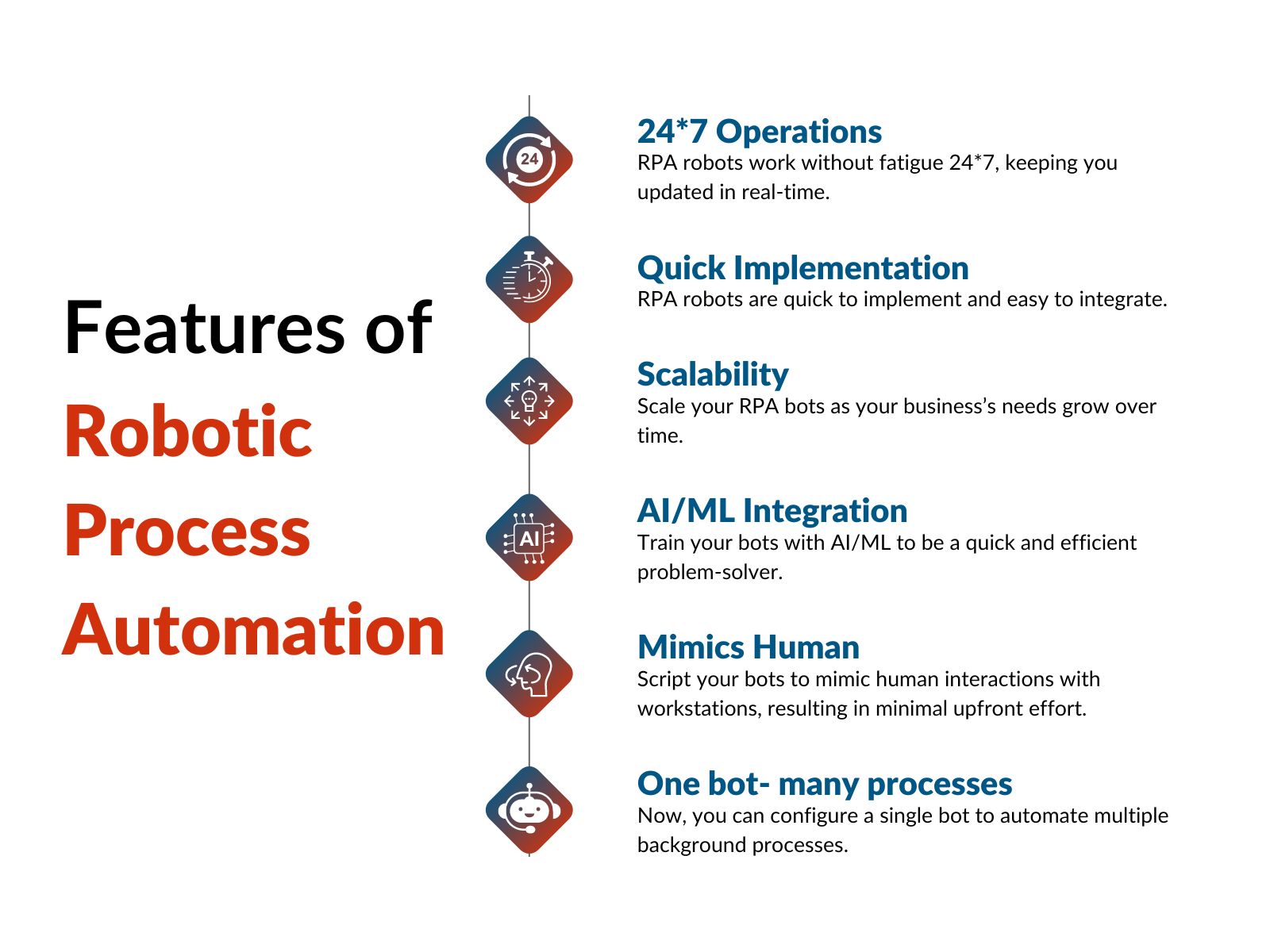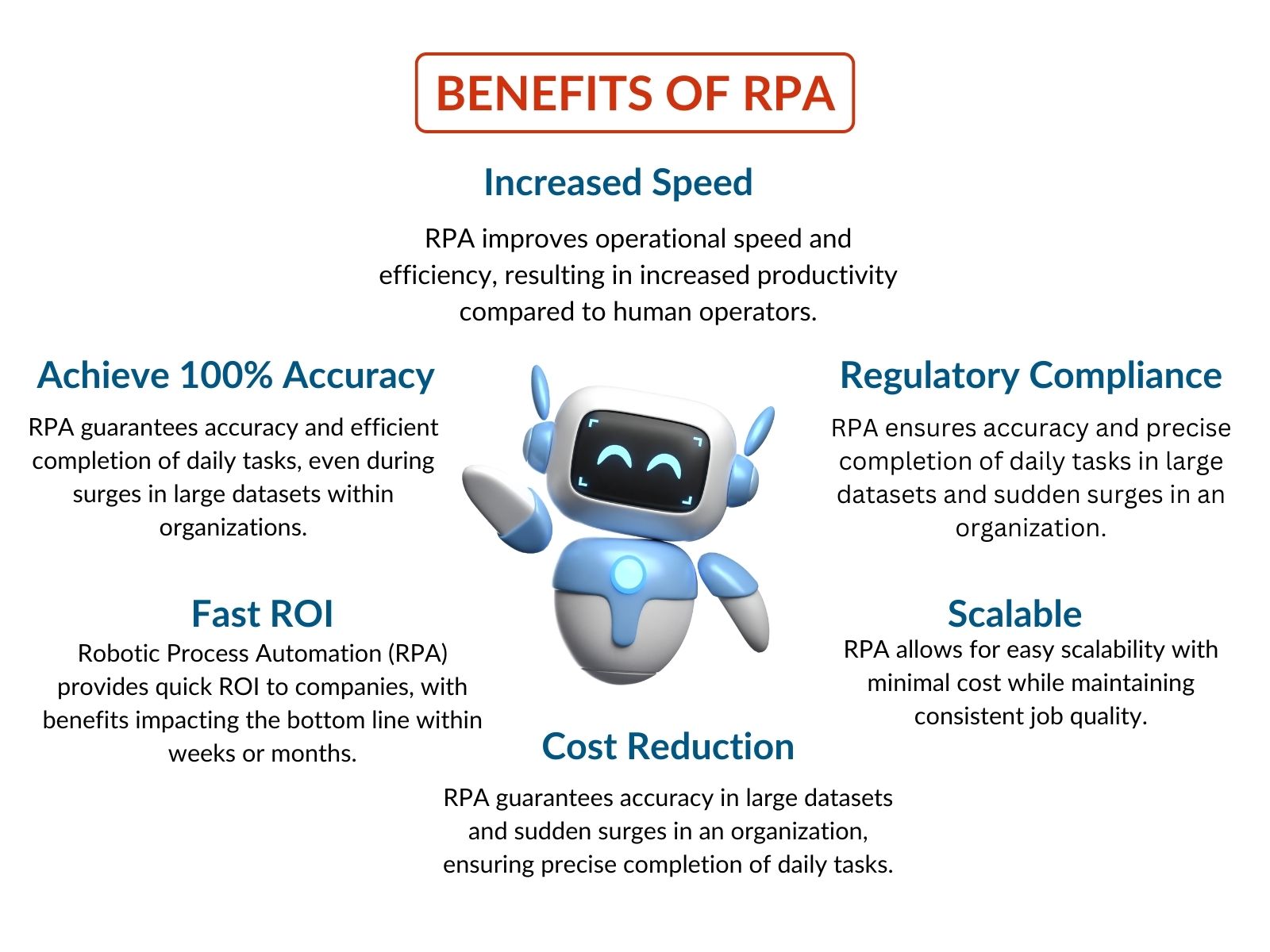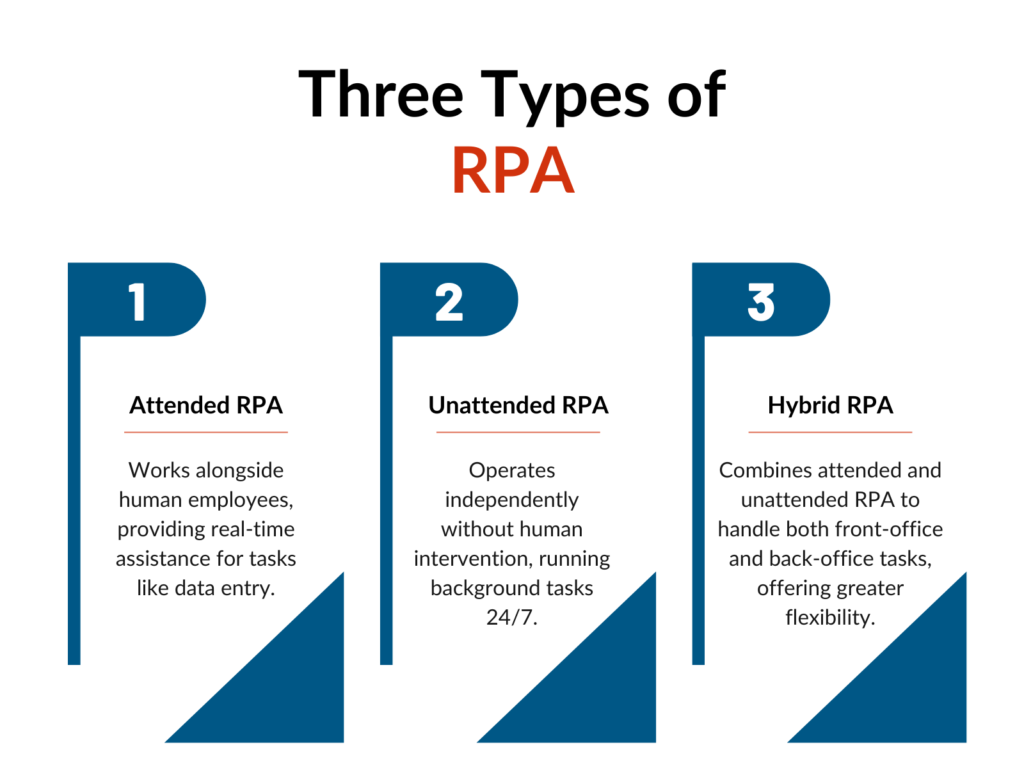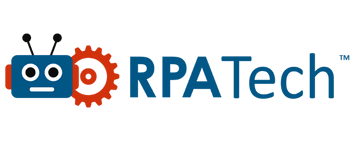Do you own a manufacturing company? Or, does your company operate in Supply Chain/Logistics? Are you a healthcare industry? Or, do you have an educational institution? Whatever industry your company belongs to, Robotic Process Automation (RPA) is here to release your employees from the bandwidth of mundane and rote tasks.
Do you know the market size of RPA software grew to 38.9% in 2020 which is $1.9 billion? Yes! According to Gartner, this is the worldwide revenue of Robotic Process Automation.
The RPA economy saw a tremendous rise in adoption by leaders during the pandemic. It is because of the ability of RPA to improve process quality, speed, and productivity.
When the pandemic hit the world, it affected not only our health but also the health of businesses. The leaders focused on meeting cost-reduction demands, business expansion, and customer satisfaction. And, because of the many benefits of RPA, leaders opted to adopt it in their business processes.
This article will answer your questions about RPA, its benefits, features, and why it is best for your company’s productivity.
So, let us answer the first question: What is Robotic Process Automation (RPA)?
What is Robotic Process Automation (RPA)?
Robotics Process Automation, or RPA, is an automation technology that mimics human actions. Much like humans, it can interact with computer applications and perform assigned tasks.
There are several human interactions best suited for automation. Some of them are keyboard inputs, mouse movements, and data reading from the screen.
Business process automation with RPA is faster and cheaper. Also, RPA does not change the existing IT infrastructure; instead, it complements it.
Now that we understand what Robotic Process Automation (RPA) is. Let us look at the salient features of Robotic Process Automation.
Features of Robotic Process Automation
There are several features of Robotic Process Automation. Below is a list of seven significant features:

24×7 Operations
Robots, unlike humans, do not need coffee breaks or time to stretch. RPA robots can work without getting tired 24×7. Get real-time updates/ alerts for any deviations anytime, anywhere.
Quick Implementation
Optimize and automate manual and inefficient processes within 4-8 weeks. RPA robots are easy to integrate and powerful enough to scale as per the requirements.
Flexibility
As per the requirements of the business, you can increase/decrease the number of bots. RPA bots are quick and flexible to develop and deploy.
AI/ ML Integration
Take your RPA implementation to the next level with AI and ML. Now train your bots with RPA+AL+ML to be quick and efficient real-life problem solvers.
Mimics Humans
RPA bots can mimic human actions on workstations. With RPA, automate systems with minimal upfront, which was challenging to automate.
Multi – Applications
Seamless working on various applications is another feature of RPA bots. RPA can work on ERP, web/desktop applications, and documents all at the same time without getting lost.
One Bot – Many Processes
With RPA, configure a single bot for several processes. Yes, now a single bot can perform various tasks. For that, you need to schedule your operations and let the bots unleash the magic.
Benefits of Robotic Process Automation
Now that we are aware of RPA features let us move ahead and check out RPA benefits. There are many benefits that your company can garner using RPA. Check the list below.
List of benefits of Robotic Process Automation.

Achieve 100% Accuracy
The first benefit of RPA in an organization is accuracy improvement. RPA brings 100% accuracy to your daily work. Yes, 100% accuracy, whether it is extensive data or an unprecedented spike.
Increased Speed
The second benefit of RPA is an increase in speed. The bots are faster and more efficient compared to human operators. It leads to smoother and quicker operations and improved productivity.
Regulatory Compliance
The other benefit that comes on the list is regulatory compliance and control. The bots adhere to pre-defined processes, leading to better compliance and management. The unique and secure login details offer better control and transparency to operations.
Cost Reduction
Next is the cost reduction benefits of RPA in the list. The efficiency and speed of bots lead to optimal resource use that leads to cost reduction.
Scalable
The next benefit of Robotic Process Automation (RPA) is scalability. RPA helps companies in quick scalability using RPA solutions. The robotic workforce is easy to increase and decrease with zero to low costs. In doing so, it maintains consistency in job quality.
Fast ROI
Last but not least, RPA benefits companies with quick ROI. Now, companies can receive ROI within weeks or months. The other benefits of RPA touch the bottom line resulting in fast ROI.
Types of RPA
There are three main types of Robotic Process Automation (RPA): attended automation, unattended automation, and hybrid RPA. Each type serves different operational needs within a business.
Let’s look at each type closely.

1. Attended RPA
Attended RPA, or Robotic Process Automation, is specifically designed to work in tandem with human employees to assist them in their daily tasks and operations. These intelligent bots are triggered by user actions and provide immediate, real-time assistance by automating various repetitive and mundane tasks such as data entry, customer service interactions, and other routine activities. They are particularly useful in front-office operations where human intervention is required to handle more complex tasks that cannot be fully automated due to their intricate nature.
For instance, in a customer service environment, an attended RPA bot can significantly aid an agent by quickly pulling up relevant customer information from multiple databases, thereby speeding up the resolution process. This not only improves the efficiency of the service provided but also enhances overall customer satisfaction by reducing waiting times and ensuring that customer issues are resolved more swiftly and accurately. Additionally, these bots can multitask, allowing human employees to focus on more strategic and high-value activities, ultimately leading to a more productive and satisfied workforce.
2. Unattended RPA
Unattended RPA, or Robotic Process Automation, operates entirely independently without any human intervention. These sophisticated bots are designed to run continuously, 24/7, in the background of an organization’s systems. They execute a variety of predefined tasks, such as complex data processing, batch operations, and other critical backend processes that keep the business running smoothly. These bots are particularly well-suited for high-volume tasks that require minimal decision-making, making them highly efficient. They can be scheduled to run at specific times or triggered by specific conditions, ensuring that essential operations are carried out without delay.
This type of RPA is commonly employed in back-office operations where the goal is to achieve maximum efficiency and significant cost savings. For example, an unattended RPA bot can seamlessly manage payroll processing, ensuring that all employees are paid accurately and on time, without any need for human oversight. This not only reduces the potential for human error but also frees up human employees to focus on more strategic and creative tasks that add greater value to the organization. In essence, unattended RPA represents a powerful tool for businesses looking to streamline their operations and enhance overall productivity.
3. Hybrid RPA
Hybrid Robotic Process Automation (RPA) combines the features of both attended and unattended RPA to provide a more versatile and comprehensive automation solution. This approach not only allows for seamless collaboration between human workers and bots but also enables a harmonious blend of front-office and back-office automation tasks. With hybrid RPA, organizations can handle end-to-end processes that require the integration of both attended and unattended tasks, thereby offering greater flexibility and scalability for complex workflows.
This type of RPA is particularly beneficial for organizations looking to optimize their entire operation from start to finish. By leveraging hybrid RPA, businesses can achieve a higher level of efficiency and accuracy in their processes. For example, a hybrid RPA system can significantly streamline the onboarding process for new employees by automating the initial data entry tasks, such as collecting personal information and setting up employee profiles, while also providing real-time support to HR staff during the more nuanced parts of the process, like conducting interviews and handling sensitive documentation.
Furthermore, hybrid RPA can be adapted to various industries and use cases, making it a versatile tool for improving operational performance. In the financial sector, for instance, it can automate routine transactions while enabling staff to focus on more strategic tasks. In healthcare, it can help manage patient records and appointment scheduling, ensuring that medical professionals have more time to focus on patient care.
Overall, hybrid RPA represents a significant advancement in the field of automation, offering a robust solution that enhances productivity, reduces errors, and streamlines complex workflows across a wide range of business functions.
Summing Up
Robotic Process Automation (RPA) has been a part of the technology market since the 2000s. However it is in recent years that business leaders are implementing it at a fast pace worldwide. The leaders are drawn towards the benefits and features that RPA offers. RPA helps businesses to stay competitive in the market and helps in scalability. So, if you want to remain competitive, then integrate RPA into your processes now.
Spread and share these benefits and features of Robotic Process Automation (RPA) within your organization.
Choose RPATech for unmatched RPA services
RPATech is a leading RPA services provider. Our experts at RPATech deliver customized RPA solutions to clients. Get in touch with our experts at +91-8010-369-369 or write us your queries at [email protected]. Book your free demo NOW!
Frequently Asked Questions (FAQs)
RPA (Robotic Process Automation) generally does not require extensive coding skills. Many RPA tools offer user-friendly interfaces and drag-and-drop functionalities that allow users to automate tasks without deep programming knowledge. However, for more complex automations, some coding may be necessary.
RPA mimics human actions to interact with software applications, while API (Application Programming Interface) integration allows direct communication between different software systems. RPA is typically used for automating repetitive tasks involving multiple applications, whereas API integration is used for seamless data exchange and functionality between systems.
- Attended RPA: Works alongside human employees, providing real-time assistance for tasks like data entry.
- Unattended RPA: Operates independently without human intervention, running background tasks 24/7.
- Hybrid RPA: Combines attended and unattended RPA to handle both front-office and back-office tasks, offering greater flexibility.
The cost of RPA can vary widely depending on the complexity of the automation, the number of bots needed, and the RPA vendor. While initial setup and licensing can be expensive, the long-term savings in time and labor often justify the investment.
AI and RPA serve different purposes. RPA is best for automating repetitive, rule-based tasks, while AI excels at handling tasks that require learning, decision-making, and pattern recognition. Combining both can offer a powerful solution for complex automation needs.
RPA and Python serve different needs. RPA is ideal for automating business processes with minimal coding, whereas Python is a versatile programming language suitable for a wide range of applications, including automation, data analysis, and machine learning. The choice depends on the specific requirements of the task.
RPA can interact with legacy systems without requiring changes to the underlying code or infrastructure. It mimics user actions to perform tasks, making it an effective solution for integrating and automating processes across outdated systems that lack modern APIs.
Yes, RPA remains valuable for automating repetitive, time-consuming tasks, improving efficiency, and reducing errors. It continues to evolve with advancements in AI and machine learning, expanding its capabilities and applications in various industries.




